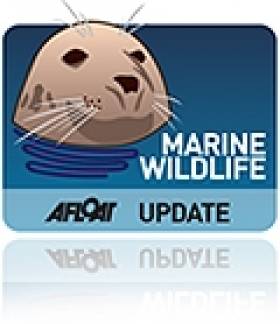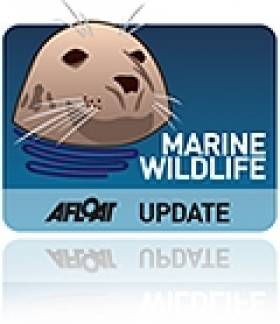Displaying items by tag: Superpod
#MarineWildlife - A tip of the hat to @BestBaltimore on Twitter for this video of a dolphin 'superpod' that congregated outside Baltimore Harbour in West Cork yesterday (Thursday 15 May).
Such superpods can comprise as many as 1,000 or more dolphins - so the vast numbers seen here breaching the surface may only have been a fraction of a much larger group.
Early last year researchers captured video of a superpod hundreds of dolphins strong in the Irish Sea, with one describing the scene as "boiling" with the gregarious marine mammals.
First Whales of 2013 Sighted Off Wexford
#MarineWildlife - The whale watching season is well under way off the coast of Wexford, as the Irish Whale and Dolphin Group (IWDG) reported its first sightings of 2013 this week.
Just an hour into the maiden cetacean spotting voyage of the IWDG's new research vessel Celtic Mist at the weekend, members of the group were treated to the sight of fin whales and minke whales feeding south of Hook Head - not to mention some of the 'superpod' of dolphins seen last week in the Irish Sea.
And as World Irish reports, local wildlife ranger Tony Murray spotted the first humpback whale of the year in the same area.
Murray suggested that "a large herring haul going on in the southeast at the moment" is the main attraction for the ocean giants and their smaller, more plentiful companions.
The IWDG's Facebook page has a photo gallery containing some stunning snapshots of the day's excursion HERE.
Researchers Film Dolphin 'Superpod' In Irish Sea
#MarineWildlife - BBC News has some incredible footage of a 'superpod' comprising hundreds of dolphins in the Irish Sea captured this week.
The video was shot by surprised researchers with the Wales-based Sea Trust on one of the groups routine survey expeditions between Fishguard and Rosslare on board the Stena Europe ferry.
Cliff Benson of the marine wildlife charity described the sea as "boiling" with dolphins just 10 miles off the Irish coast yesterday morning.
"They were just coming and coming. It was the last thing on earth I was expecting in the winter," he said. "We had at least 250 and that's a conservative estimate. I'm guessing there was as many as 500."
The incredible sight comes just a month after the researchers recorded what they called a "dolphin-fest" along the same route west of Tusker Rock, numbering more than a 100 dolphins and 26 porpoises.
BBC News has more on the story HERE - and more footage is available HERE via RTÉ News.


























































